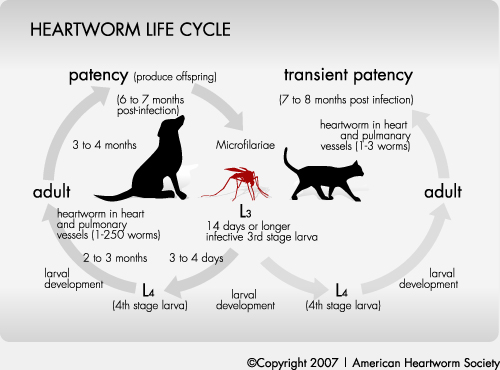That link talks about doing a yearly test for dogs:
1. Who have been on the heartworm pills
2. Who have not been on heartworm pills at all before putting them on the pills
3. Who are switching between types of pills (say going from Heartgard to Interceptor or vice versa)
This is some important information - puppies can start on the pills younger than 7 months of course:
Puppies under seven months of age can be started on heartworm preventives without first being tested. This is because it can take up to six and one half months after being bitten by infected mosquitoes before the dog will test positive. The puppy should be tested four to seven months after starting heartworm preventive to detect any infection acquired during the first few months of life. Consult with your veterinarian to determine the right testing schedule for your pet.This rescue re-tests dogs in foster at the six month point after their first heartworm test.
This is how we discovered that Mila was heartworm positive. Using the SNAP test (tests for antigens if you want to google) it can detect as few as one or two adult female worms, and in general, infections that are at least 7 or 8 months old. When Mila first came in and was tested in December her infection was not yet able to be detected.
 | ||||
| Oh, SNAP! |
This blog has been a little slow in terms of her treatment because it took quiet a while to get her to that quieter point, as detailed before. It is nice to have a quiet heartworm positive foster, and a little more nerve-wracking to have one with pizazz and moxy!
As we've said, that's because as the worms die off they can clog the blood vessles in the lungs and create clots. If the dog is moving, barking, etc, that faster blood rate, higher blood pressure that comes with that activity can cause an embolism: a blood clot in the lung. You do not want this! More here: http://dogaware.com/articles/wdjheartwormtreatment.html#immiticide
So we needed to practice pottying on the leash. Mila is good at that BUT we discovered that she prefers the long line to a shorter leash, so she can at least have a little privacy.
 |
| Do you mind? |
 | ||||
| Bad short leash - too close for comfort |















